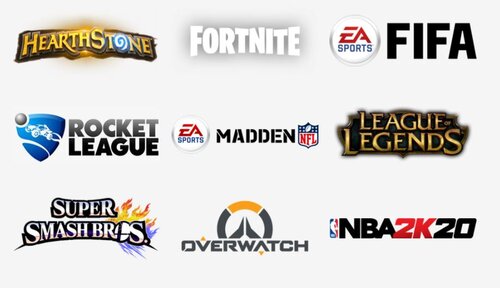You’ve decided that you want to start up an esports team in your school. After reviewing the benefits of academic esports you’re confident the addition of competitive gaming will positively impact your school.
Now that your heart is set on creating a new team, you wonder, “Now what?”
Fear not, esports pioneer, we’ve laid out the stepping stones to make your journey easy. Use the steps below to guide you in forming your very own esports team:
Step 1: Pick Your Game

Perhaps one of the most important decisions you will make as part of this process is choosing what game your school will support. There are many variables to consider in deciding, and your choice can make the difference between widespread engagement and an empty season roster.
First, consider what games the student body is already playing. Research this by asking around, performing a student survey, or holding a vote with your classes. Picking a game that’s already well-loved will boost student engagement. During this research, it’s also a good idea to identify how many students are interested in joining. Determining the number of interested students will help you gauge the expected number of participants, which can help you narrow down games based on team size.
Next, you must consider what your school will allow. Many esports have specific hardware requirements, so it’s essential to consider what sort of budget you’ll be allowed and what hardware you or potential esports team members already have available. Also, you must consider what game themes might be appropriate for your school or your target age group. As many esports have weaponry and cartoon violence, you must identify clear boundaries with your school and players’ parents.
Finally, decide the goals of your organization. The best choice will be different based on your desired outcomes for the participants. If you seek scholarships, college admission, or competition trophies, your game choice will be different than if you aim to create an environment where students can unwind and have fun in a community setting. (Note: we’ve found that many esports can accomplish both of these goals simultaneously!)
Step 2: Generate Interest

Once you have your game, the next step is to find teammates! The best way to get students involved is by treating it like any other sport, club, or afterschool activity. Put flyers up around campus, advertise during assemblies and announcements, and let your student body know about the opportunity you’re presenting to them!
If you intend on forming a competitive esports team, we recommend that you also hold tryouts. In the process, define the roles required on your team so that you can inform prospective members about the different positions they can aim for.
Step 3: Set Up Your Team

Like with other sports teams and academic clubs, it’s essential to give students involved specialized roles that play on their strengths and growth potential.
First, you’ll need to fill the role of a coach. Since you’re organizing this new sport, that role might already be yours! As a coach, you’ll be responsible for keeping your team organized and motivated. You’ll also likely be the one to mediate disagreements between teammates. If you’d prefer not to participate as a coach, prioritize finding a passionate teacher or coordinator that will be willing to spend their time on these sorts of tasks.
Next, you’ll need a diverse group of players. Like with most team sports, different players on a team will serve different roles. Before you create these roles, you must do some studying on your game of choice. Understanding proper team composition is vital to a good team dynamic. Along with your team, you’ll need enough players to sub in if a player is unavailable on the day of or during a competition.
Finally, you’ll need a collection of students to serve as esports staff! This team can include assistant coaches who help plan goals and warmups and analysts who can help your team calculate team stats and develop strategies. Note that these roles will require equal if not more knowledge of the game you’ve chosen to play. Not every team member will be a player. A successful team needs and will pave the way for future analysts, assistant coaches, shoutcasters, social media managers, and more! For a lot of participants, this will be great exposure to the different career opportunities available in the Esports industry.
Extra Credit: Partner with Mastery Coding!

Setting up a functioning esports team can be a lot of work. Make the process easy and efficient with Mastery Coding! Our course’s materials walk you through how to choose games, get students interested, and set up a team with ease!
Plus, once you’re set-up, we’ll help you get into a sustainable practice groove, provide gaming healthy habits and strategy, and even let your students know about the exciting opportunities that esports can provide to them!













.webp)

